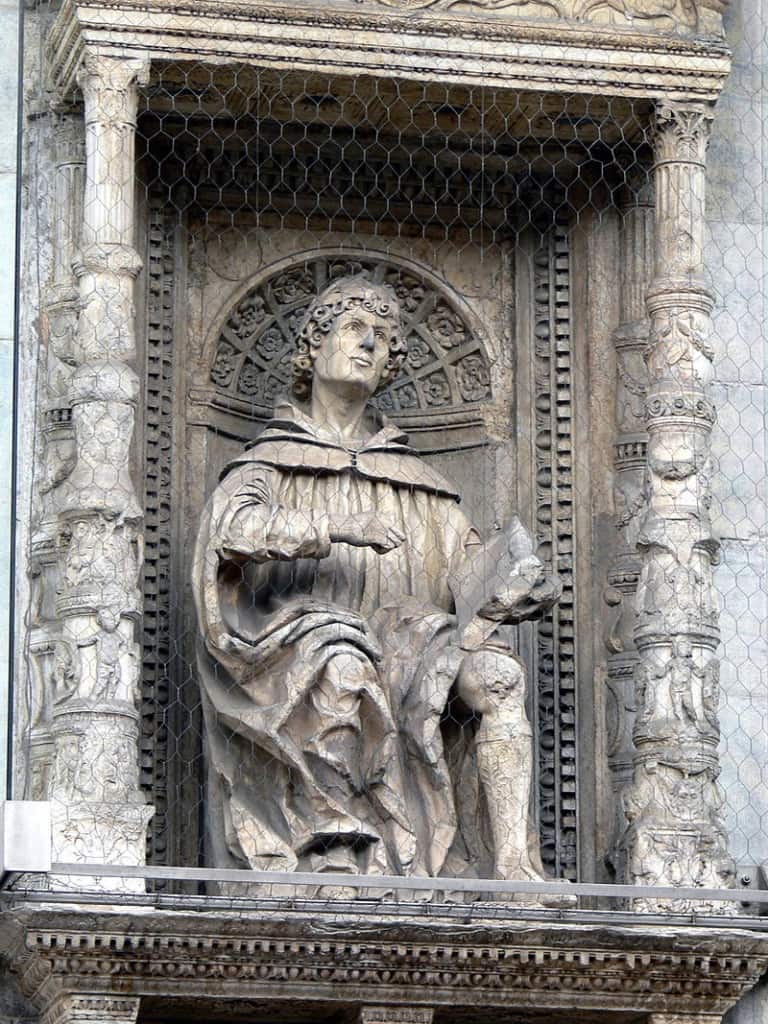
By: Heidi Kershner
Target Students: 6th grade
Historical Thinking Skills: Contextualization, Close Reading, Sourcing
Essential Question: What was the nature of slavery in the Roman Empire?
Rationale: The scaffolding questions listed below ask students to first locate the document within time and space. Having done this, students are then asked to engage both with the provided document and other secondary sources in order to further understand the institution of slavery in a Roman context. Finally, students are called upon to determine what might be unsaid in the document. To answer this, students will need to use what they already know about Roman history and society in order to fill in the blanks of Pliny the Younger’s letter.
Primary Source:
“XXXIII To ACILIUS THE atrocious treatment that Largius Macedo, a man of praetorian rank, lately received at the hands of his slaves is so extremely tragical that it deserves a place rather in public history than in a private letter; though it must at the same time be acknowledged there was a haughtiness and severity in his behaviour towards them which shewed that he little remembered, indeed almost entirely forgot, the fact that his own father had once been in that station of life. He was bathing at his Formian Villa, when he found himself suddenly surrounded by his slaves; one seizes him by the throat, another strikes him on the mouth, whilst others trampled upon his breast, stomach, and even other parts which I need not mention. When they thought the breath must be quite out of his body, they threw him down upon the heated pavement of the bath, to try whether he were still alive, where he lay outstretched and motionless, either really insensible or only feigning to be so, upon which they concluded him to be actually dead. In this condition they brought him out, pretending that he had got suffocated by the heat of the bath. Some of his more trusty servants received him, and his mistresses came about him shrieking and lamenting. The noise of their cries and the fresh air, together, brought him a little to himself; he opened

his eyes, moved his body, and shewed them (as he now safely might) that he was not quite dead. The murderers immediately made their escape; but most of them have been caught again, and they are after the rest. He was with great difficulty kept alive for a few days, and then expired, having however the satisfaction of finding himself as amply revenged in his lifetime as he would have been after his death. Thus you see to what affronts, indignities, and dangers we are exposed. Lenity and kind treatment are no safeguard; for it is malice and not reflection that arms such ruffians against their masters…I can tell you one further circumstance relating to Macedo, which now occurs to me. As he was in a public bath once, at Rome, a remarkable, and (judging from the manner of his death) an ominous, accident happened to him. A slave of his, in order to make way for his master, laid his hand gently upon a Roman knight, who, turning suddenly round, struck, not the slave who had touched him, but Macedo, so violent a blow with his open palm that he almost knocked him down. Thus the bath by a kind of gradation proved fatal to him; being first the scene of an indignity he suffered, afterwards the scene of his death. Farewell.”
Pliny, the Younger (2011-03-30). The Letters of Pliny the Younger (Kindle Locations 798-810). . Kindle Edition.
Secondary Sources:
1. Frey, W., J. Bergez, A. Joseph, & Teachers’ Curriculum Institute (2004). History Alive! The Ancient World. Palo Alto, CA: Teachers’ Curriuclum Institute.
2. “The Roman Empire in the First Century.” Retrieved from: PBS
Scaffolding Questions:
- Who wrote this letter? Around when and where was this letter written? Use your textbook and/or this PBS site to answer these questions.
- Given what the author tells you about Largius Macedo, what can you infer about slavery in the Roman Empire?
3. What hasn’t the author told us in this letter–what has been left out?
Summary & Reflection
During this mini-lesson students will be asked to engage with the primary source (Pliny the Younger’s letter) itself as well as use secondary sources (the PBS website and their textbook) in order to discover more information about the primary source. This lesson should occur during a larger unit about ancient Rome so that students will have some background information about ancient Roman society and its stratification. This lesson will serve as a jumping off point to talk about slavery in the ancient Roman Empire and how it compared to manifestations of slavery in other time periods and regions of the world. Once students have answered the above scaffolding questions they will then be called upon to create a 4-5 panel comic strip displaying the events described in the letter from the perspective of Largius Macedo’s slaves. This exercise will call upon students to critically engage with the primary source, especially in terms of “reading the silences”–deciding what has not been said.
I found the design process for a lesson using the SHEG model to be a lot more difficult than I anticipated. It is a very thorough and thoughtful process that I look forward to using again in the future. This particular lesson I think would be a great starting point for a larger lesson about slavery and its various manifestations and/or social class in general.
Image Credits:
“Como – Dom – Fassade – Plinius der Jüngere” by Wolfgang Sauber – Own work. Licensed under CC BY-SA 3.0 via Commons – Link
“Borghese gladiator 1 mosaic dn r2 c2” Originally from en.wikipedia; description page is/was here.. Licensed under Public Domain via Commons – Link
